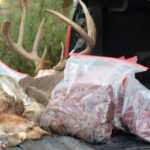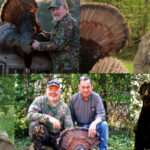It may have been mid-August but it felt more like Christmas Day. With a pair of SD cards, a bag of D batteries and a leather Bota full of water, I was off to the field for the first trail camera card pull of my life. The suspense was nearly unbearable as I neared that camera on the open gate. One week prior, I had placed it there as it was apparent the deer were heavily browsing the neighboring beanfield and using the open gate as the main entrance to the dining hall. I returned to a dead camera and a full card meaning only one thing; I got pictures of something! The suspense turned into pure anticipation as I rushed back to the family desktop to review the card’s contents! I didn’t have to wonder for long.
One of the first photos I opened was of a gorgeous 150” 9-point buck in full velvet bee-lining for the green forage. That fall, I sat near that open gate nearly every weekend, and as the season came to a close not a single sighting of the big 9 point was had. I had fallen victim to what I like to call, “Trail Camera Vision Constriction.” A case of tunnel vision that only a trail camera and a big buck can cause. A mistake I vowed to never make again.
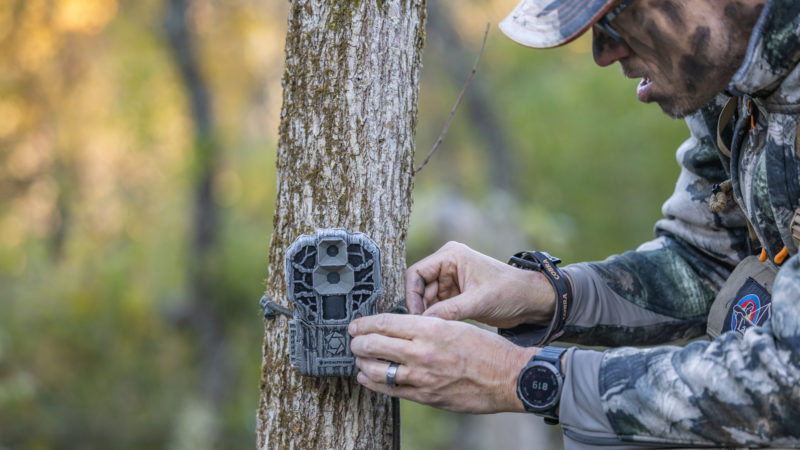
That was nearly 15 seasons ago, and since then my trail camera arsenal has grown, as has my knowledge when it comes to utilizing these tools. Because they are just that, tools in the tool bag. Unfortunately, many of us hunters rely on trail cameras as if they were the only tool in the bag when it comes to scouting; while others believe it is taking away from the original skill in hunting, woodsmanship. In this article I will cover 5 ways trail cameras are hurting your hunt.
Intrusion
Hands down, intrusion on your hunting ground is the biggest reason trail cameras hurt your hunt. Through constant visits to the property to check your camera cards, you leave behind a footprint each and every time. Don’t be fooled, the deer can pick up on your human odor left behind, and when it comes to hunting mature deer, they are scouting you just as much as you are scouting them. Frequently checking a trail camera in a buck’s home range will have him packing his bags and moving next door.
This is where cellular trail cameras thrive. Before them, these hard to access areas with cameras were often monitored far too habitually, driving any homebody deer into retreat. Once the spot was burned out, you were left scratching your head wondering where all the deer went. Now you can simply place a cellular camera and let it soak up as much data as it can. All while you receive these updates at the touch of a button on your cell phone. Problem solved right? Wrong! There are other factors to consider as well.
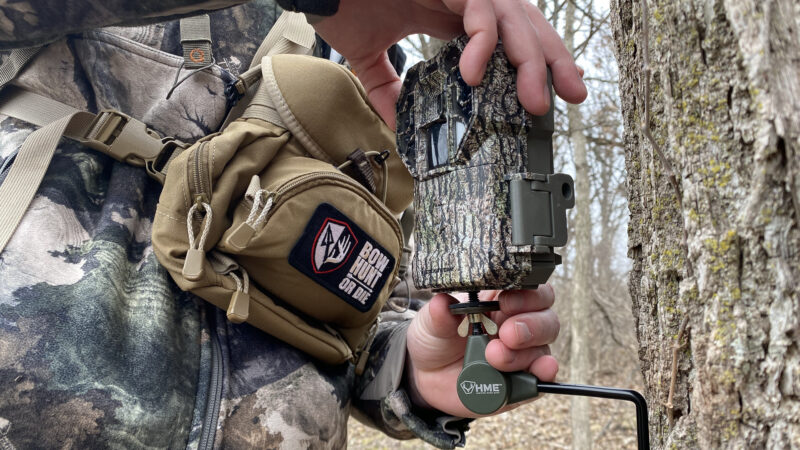
False Hope
Regardless of old school trail cameras or cell cameras, they have their pros and cons. And since this article is about the negative side effects of trail cameras on your hunting, let’s dive into another way that they hurt your hunt. We have all been there. Day after day, week after week, that big buck frequents your camera between 8 pm and 3 am. For the remainder of the season, his images are etched into your memory as you hold onto the glimmer of hope that maybe he will break his nocturnal streak while you’re posted up in the nearby stand, only to be disappointed when news comes around that the neighbor harvested him half a mile away.
As helpful as trail cameras may be, they are equally as damaging. Often, they leave us with a false sense of hope, only because we receive pictures of a big deer in the area on a regular basis. Even if it is 7 hours after legal shooting light. Most times it takes the extra effort of getting boots on the ground and backtracking the buck to find where he is moving during daylight hours.
No Hope
Other times trail camera data will do just the opposite, leaving you with no hope at all. How many times have you run cameras on a property only to receive pictures like a junior high school yearbook? A card full of does and young bucks doesn’t necessarily bring you much optimism, so you eventually write the spot off as a dud and move onto greener pastures. As luck would have it, around the second week of November you receive a picture of the giant you had been looking for all along and soon regret that you weren’t in a nearby tree.
Just because your camera isn’t picking up a shooter doesn’t mean one isn’t residing in the neighborhood. Remember, a trail camera only captures an area measured in feet amongst a space measured in acres! Trust fresh sign and your gut when it comes to these situations. If your camera shows a lot of does, eventually a buck is bound to find them.
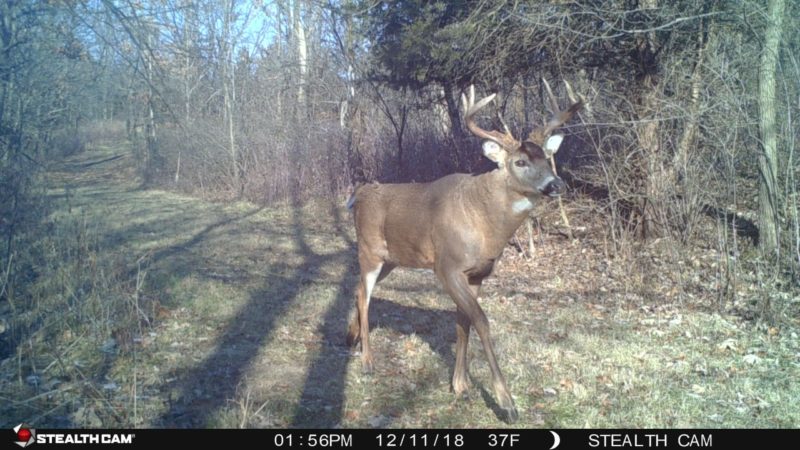
Tunnel Vision
This is the problem I referred to earlier as “Trail Camera Vision Constriction.” Tunnel Vision is another way trail cameras hurt your hunt. In the era of hit lists and harvesting mature bucks, it is easy to get caught up in the quest for a specific trophy. Sadly, once the blinders are on, they are often tricky to take off. Before you know it, the season ends, and you feel as though you had just embarked on a ghost hunt. Looking back, if only you had taken the blinders off and focused your efforts elsewhere, you may have punched that tag on another dandy.
Like the story I shared at the start of this article, had I hunted /scouted like I had in the past instead of relying so heavily on my trail camera photos, then I surely would have had an opportunity at a buck that fall. Instead, I ate tag soup due to a month’s worth of summertime photos with my first trail camera. If harvesting a specific buck is your season goal, then more power to you! But for many, like me, it is easy to get caught up in trail camera data on a specific deer and lose out on other slam dunk opportunities.
Imagination Killer
The final and most personal reason I believe that trail cameras are hurting your hunt is because of their ability to kill your imagination. The one aspect of hunting that drew me in so closely at a young age was the “unknown.” How big was the buck that made the scrape along the logging road? How many points was the buck that crossed the creek? What freak of nature rubs a telephone pole? Every…Single…Sit was going to be my opportunity at the 30-point buck! Staring at the image of The Beatty Buck on my Primos Can Call while nestled into a wooden treestand, my brain painted the picture over and over.
There was no need for a cell phone to occupy my time, my mind was like an episode from the Outdoor Channel from start to finish. Though I never did get my opportunity at the 30-point buck, it was the mystery that left me craving more. Today, I sit with years of photos of specific bucks. I know their home ranges, what food sources they frequent, what scrapes they visit, I know their individual ages, and heck I even have most of them named. As much as I enjoy this new era of hunting technology, I can’t help but yearn for those simple, humble beginnings. The days when an imagination ran wild with every track and rub that was stumbled upon.
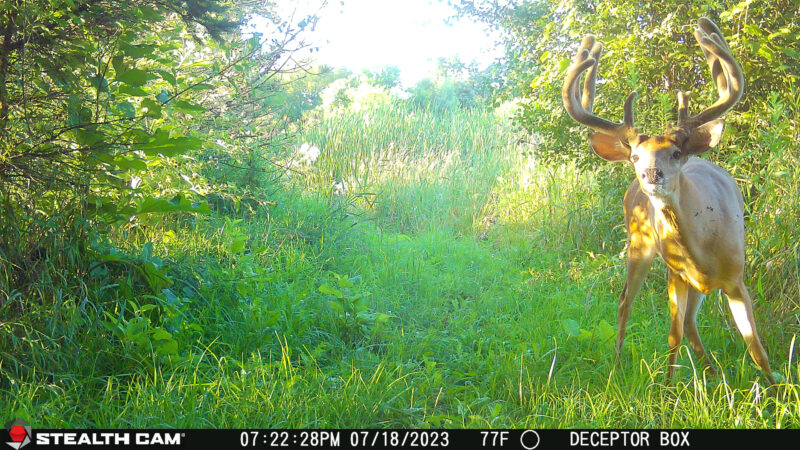
In the end, the modern trail camera has certainly helped hunters across the nation wrap their tags around game, myself included. But has it actually made us better hunters overall? Or are they doing more harm than good? That is something that can be debated as heavily as Fixed Blade vs. Expandable Broadheads; Compounds vs. Crossbows; Tree Stands vs. Saddles. But at the end of the day, whatever gets you excited about being outdoors with bow in hand and tag in pocket is what you should pursue. That is truly what this journey is all about. Happy hunting!

 By
By 
